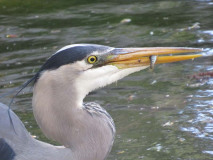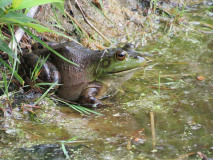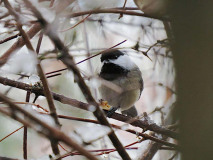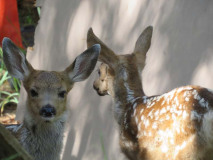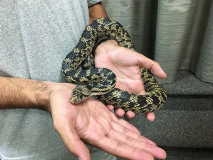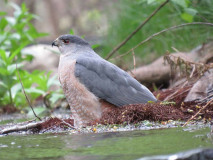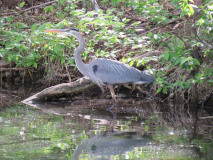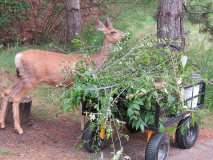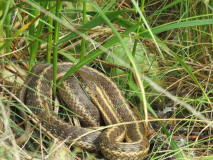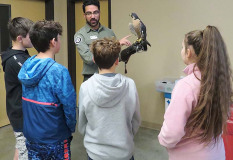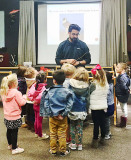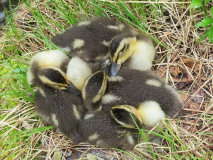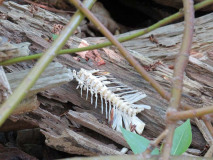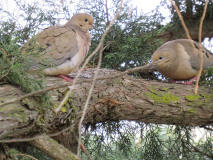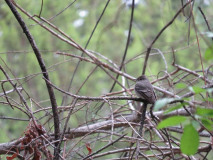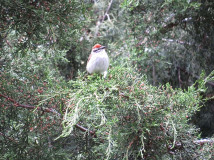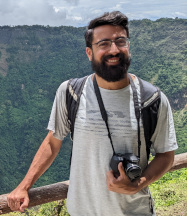No products in the cart.
Everywhere the Wild
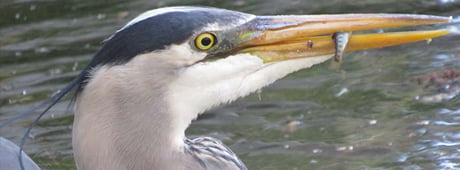
Move Slowly, Observe Closely
Stories and Photos by Austin Reich
Welcome back, friend,” I whisper. There’s no reason to think the great blue heron in front of me is the same one from last year, but I know she is. I watch her fly in a wide circle overhead and then I walk to the underwater viewing windows of the alpine lake. Sure enough, my friend lands in the same spot, as always: just across from the path, under two tall evergreens.
Her graceful landing is followed by two awkward hops as she dips her long Jurassic legs into the water. A tilt of her head orients one large golden eye in my direction. It’s difficult for a heron to look directly at something, because its eyes are widely spaced on opposite sides of its head.
A year has passed but I know what she expects. I spread large granules of pungent fish food across the water with an open hand, like a Michelin chef seasoning a soup. The water roils as rainbow trout jostle for a bite. Two more handfuls fly over the water as I send the food into a larger and larger area, and the boil reduces to a simmer. A ruffle of feathers signals that my friend still knows the drill. After one last handful of my special seasoning, the meal is ready. With the expertise of a true piscivorous connoisseur, she launches her spear-like beak into the water.
By heron measures it’s a real catch, and she struggles to walk back onto shore. But with one gulp, the trout is gone. She looks at me with what I can only interpret as an appreciative smirk, which conveys, “Same time next week.” Then, with two or three powerful beats of her wings, my friend is gone. The pot of the lake stops simmering. All I can hear is the gurgle of the stream next to me and a nearby chickadee’s “all-clear” call.
That’s just one example of the connections I made during my time as an AmeriCorps service member at the MK Nature Center in Boise. As an “assistant wildlife educator” from August 2019 to August 2021, I taught classes and conducted field trips. On Mondays, when the visitor center was closed to the public, I helped maintain the 4.6 acres of grounds by scrubbing viewing windows, filling bird feeders, raking leaves, and helping care for the education animals, including my friend Wilson, a peregrine falcon.
I discovered during those two years that there is a hidden diversity of wildlife within our own neighborhoods, and that the lives of these creatures don’t differ so much from mine. Through my weekly routine and the wisdom of the people I worked with at the nature center, I was allowed to witness such lives unfold as the seasons changed from year to year, and I made meaningful, even lifelong, connections. But in order to make them, a few things had to happen first.
I was born and raised in Idaho, near Lake Lowell, but I had the impression that wilderness was not to be found in the Treasure Valley. As a kid, I read encyclopedias and watched documentaries about the tropics, and about how scientific discovery was underneath every leaf and around every corner.
As a teen, I volunteered at Zoo Boise and taught guests about the magnificent features of animals found all around the world. At university, I conducted research in the tropics that let me see firsthand the indomitable wild and etch out a small piece of understanding. So when I took the job at the nature center, I thought it would be like playing in the minor leagues after winning the World Series. I quickly found out it was an altogether different ball game.
Great blue heron with lunch.
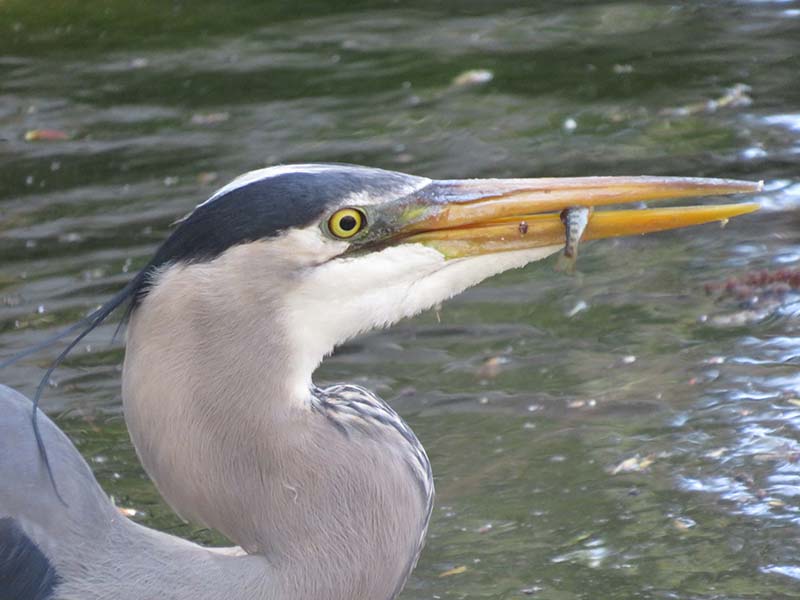
Bullfrog.
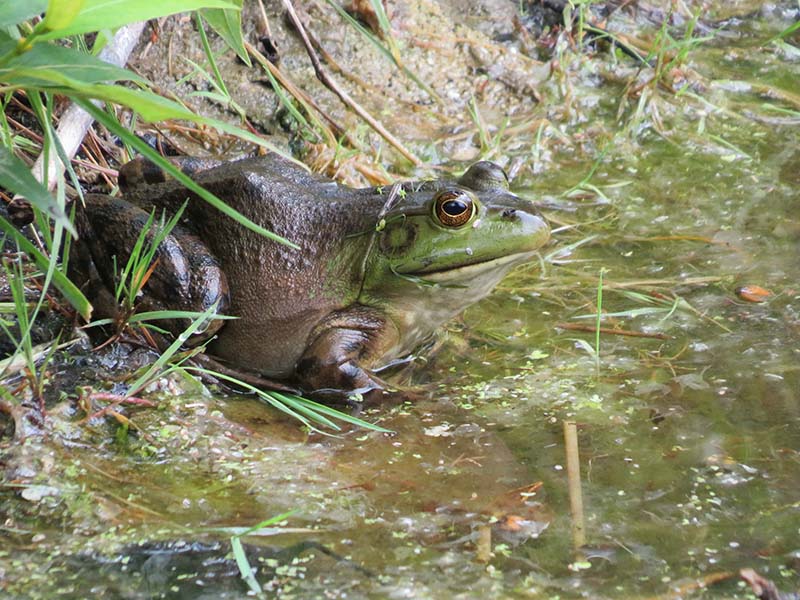
A chickadee eats a peanut.
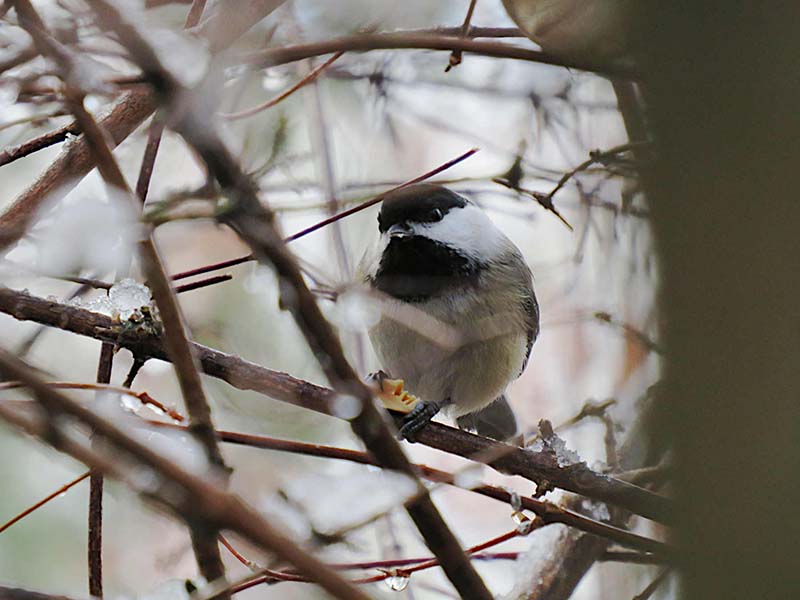
Dawn fawn twins.
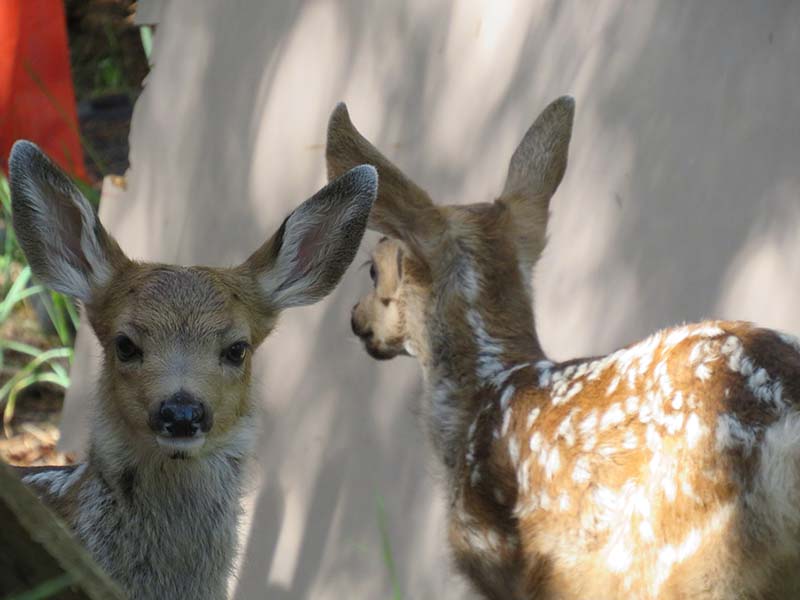
George the gopher snake.
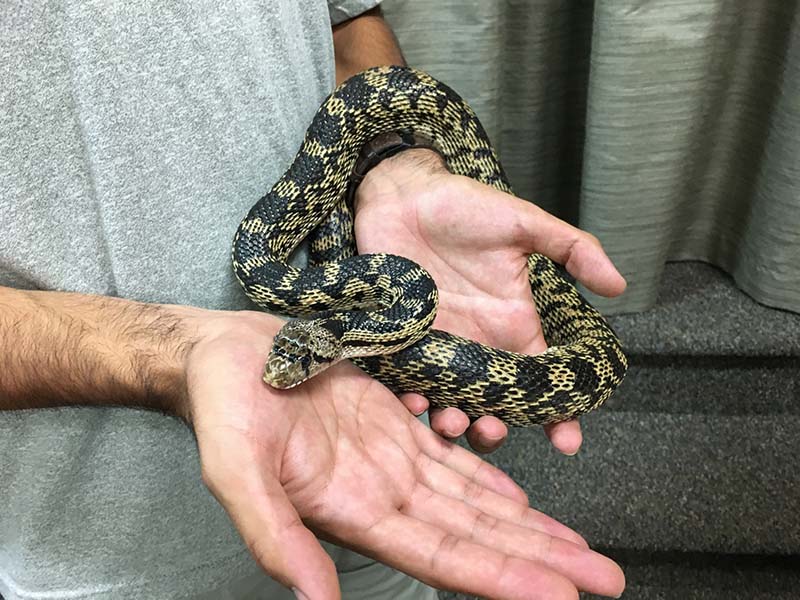
Cooper's hawk.
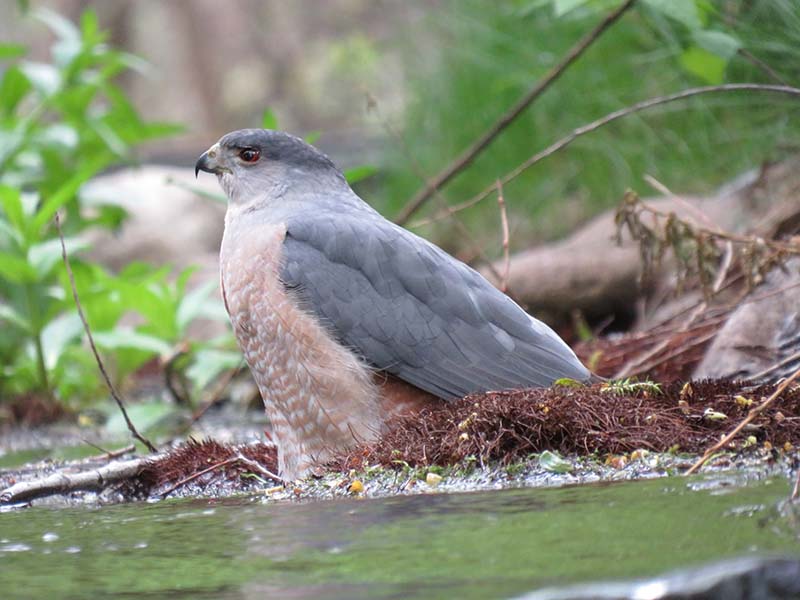
Great blue heron by the nature center's lake.
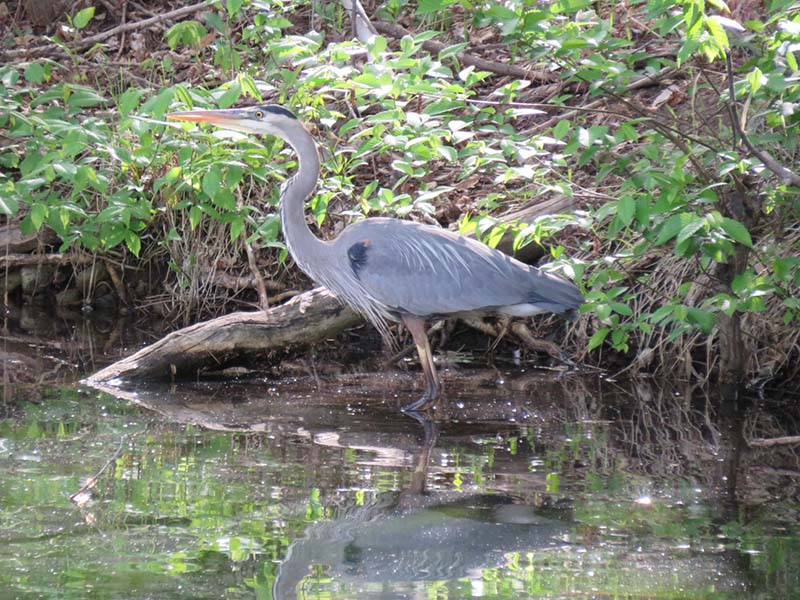
A mother deer feeds from the clippings cart.
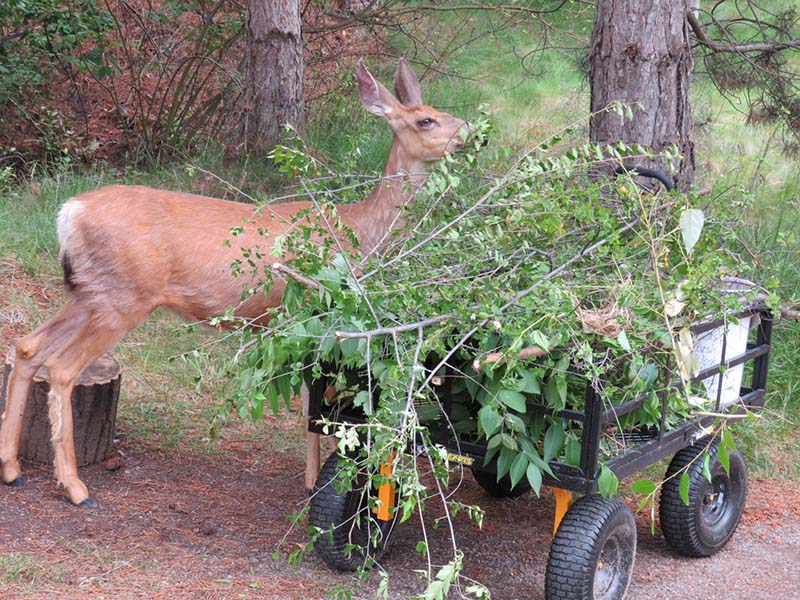
Garter snake.
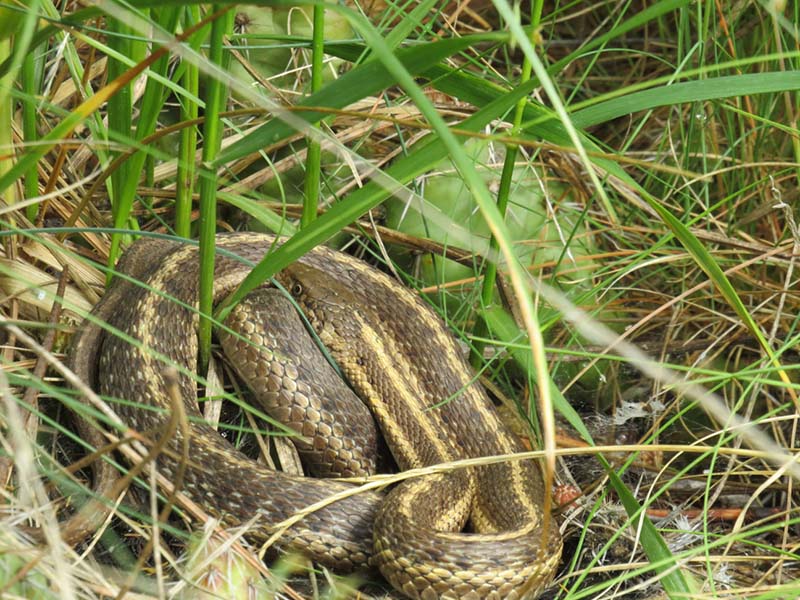
Austin teaching schoolchildren with Wilson the peregrine falcon.
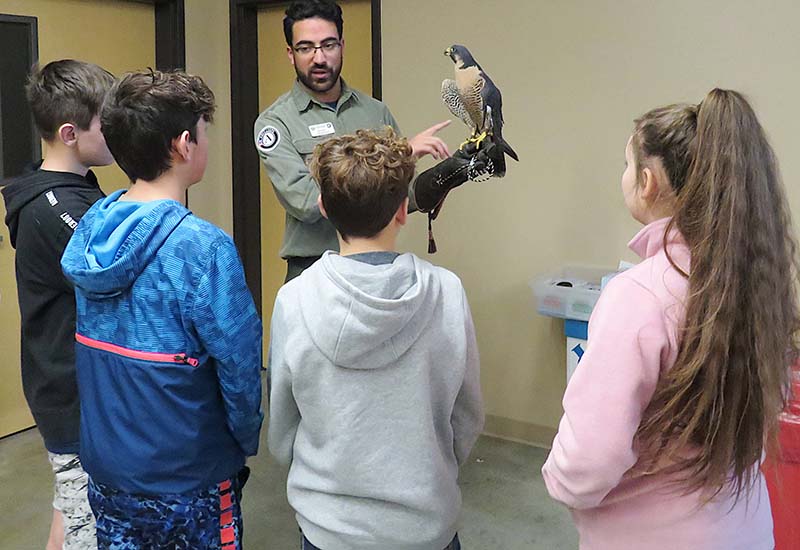
The author addresses roomful of preschoolers.
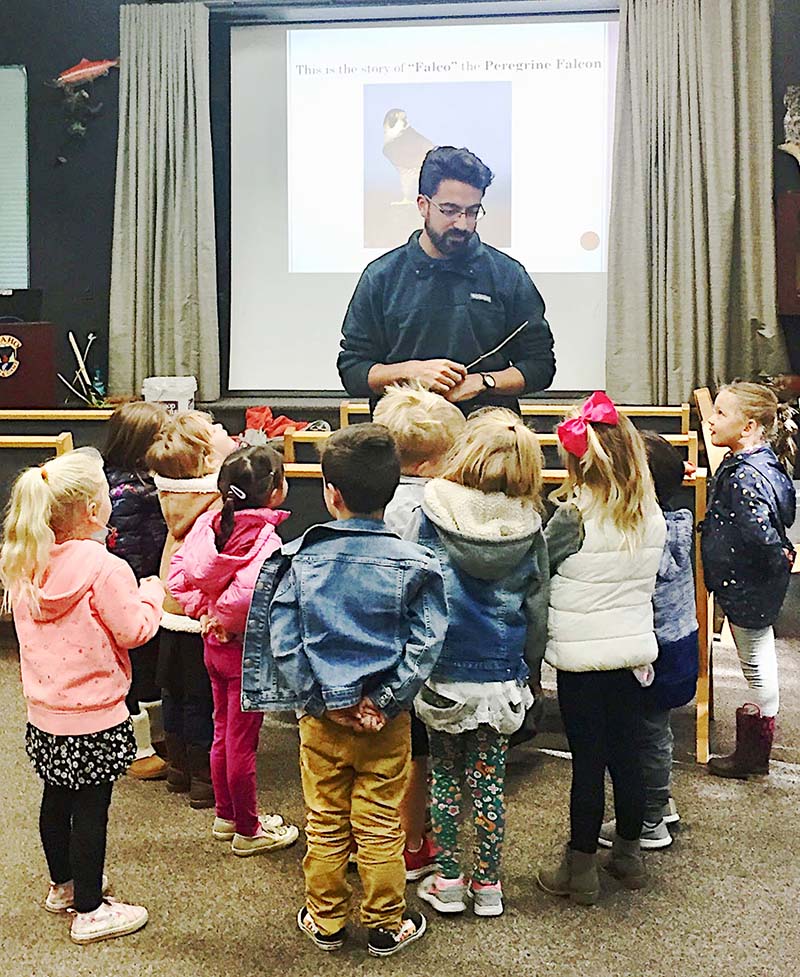
Ducklings.
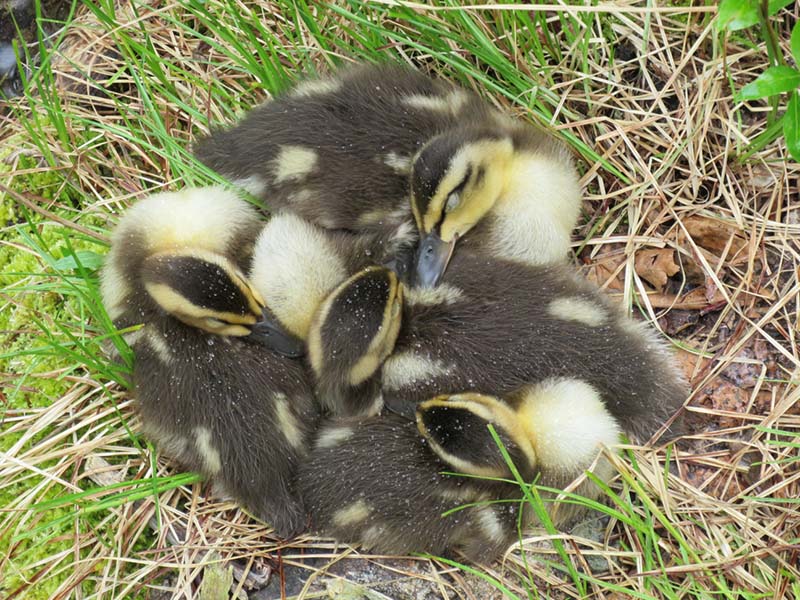
The remains of a mink's meal.
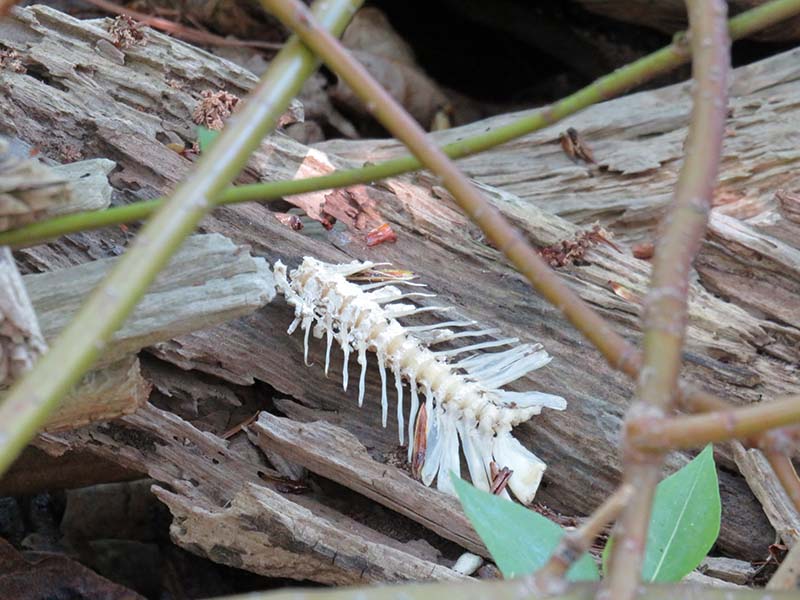
A pair of mourning doves.
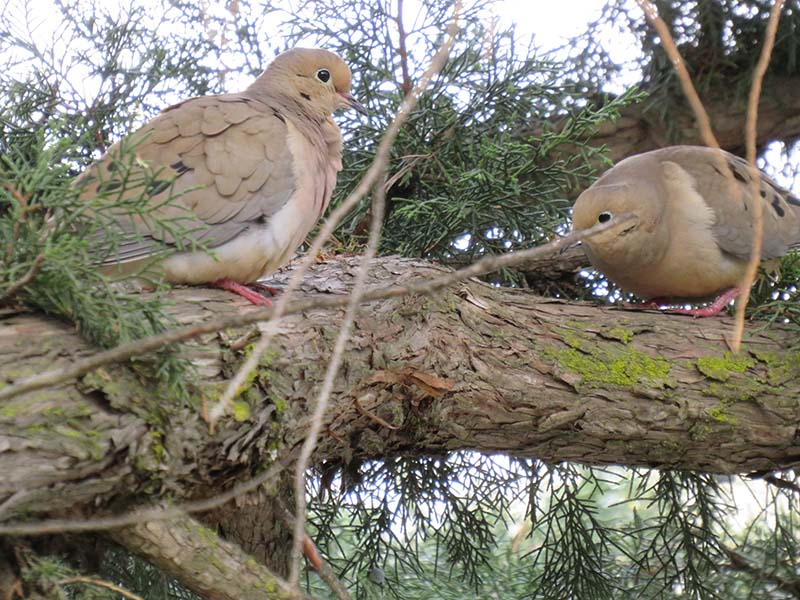
Western wood peewee.
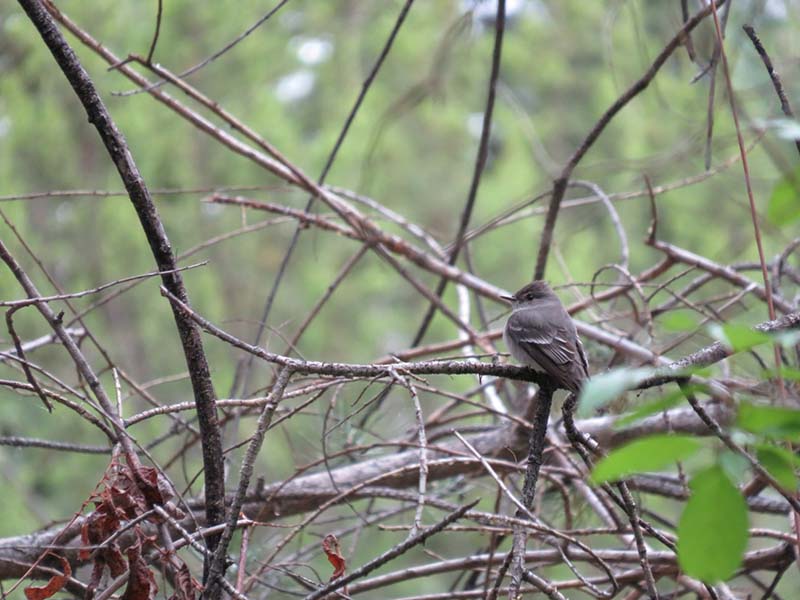
Chipping sparrow.
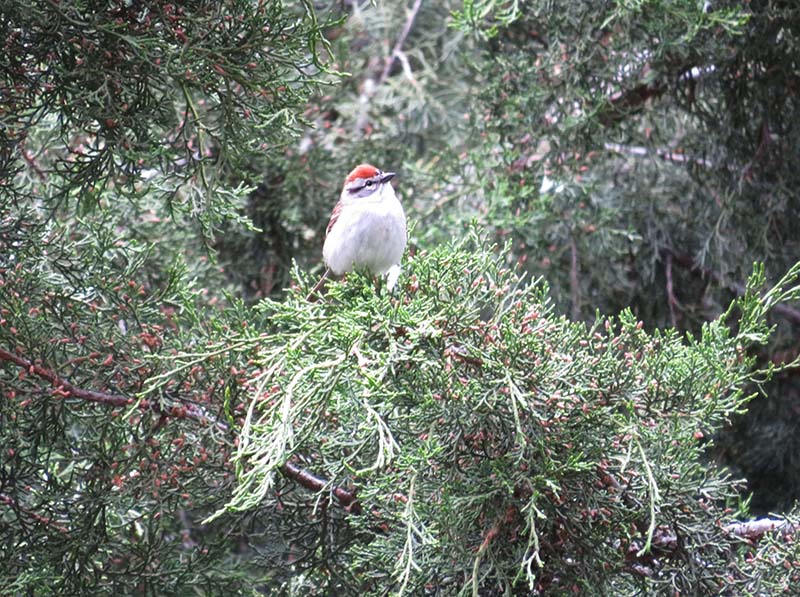
On my first day with a class, a first-grader asked me one of the simplest Idaho wildlife questions of all: “What is the difference between a white-tailed deer and a mule deer?” I was stumped. Despite all my experience, all my studies, all my pride in knowledge, I never once considered this most apparent of questions. Feeling very aware of the Idaho Department of Fish and Game seal fixed on my chest, I told the child, “I’m not sure of the difference. Let me find out for you.”
Thinking back on the moment now, I still feel shame. That experience was the first of many that taught me I needed to shift my perspective of our local fauna. Such humility was vital, because it made me start asking myself if I truly knew anything—and in turn, that allowed my students to teach me so much. At least once a day at the beginning of my time at the nature center, I said, “Let me find out for you.”
Finding answers was the easy part, although perhaps not at first. The search engine is a marvel of the modern world that offers humanity’s collective knowledge within a few clicks but we know those first results often can be simplistic, outdated, or just plain incorrect, especially with niche topics.
I found that the far better resource was the collective knowledge of all the people who worked and volunteered at the nature center. I learned a great deal from many people, but two of them stood out for me. Vicky and Sara are wildlife educators through and through, as well as my friends.
Vicky Runnoe, the conservation education supervisor for the Idaho Department of Fish and Game, and the superintendent at the nature center, is a bird nerd at heart. She often can be found on the grounds telling guests to keep an eye and ear open for any bird that might be out today. One May afternoon, Vicky beckoned to me from just outside the offices. The large aspens were full of birds, which in itself was not an uncommon sight, but that day the birds were different.
For almost twenty minutes she excitedly pointed out these special migrants that had stopped by on their way North for the summer. Brightly colored western tanagers flew around the tree, which was also speckled by the brilliant blue of indigo buntings. Chipping sparrows scattered the ground with their bright red caps, and I was pleased to recognize the western wood pewee, now among my favorite birds. Vicky helped me to identify their calls as they sang.
Her genuine love and appreciation for what I had thought were common and uninteresting birds now made me take a second, closer look whenever a bird flew by. Through her, I found out about the different types of sparrows, juncos, chickadees, finches, and other little brown birds (known as LBBs to birders). Those flocks of small dark shapes that you can find almost anywhere became a mystery to unfold. “Who is in that flock? What might they be doing here?”
I began to notice when the same birds visited again and again. I wondered, “What are the chances I’ll see those three black-capped chickadees and the six dark-eyed juncos when I pass this tree again? They must be the same ones each time.” Birds were able to be individuals to me now, with differences and personalities. I began to notice when there were changes, if someone migrated away, or when they came back. “Now there are four chickadees,” I’d think. “Did someone find a mate? Or was there a birth in the family? Could these be new birds altogether?” My eyes were opened to a world I had never known.
Sara Focht is the education program coordinator, and she was my direct supervisor. She had the knowledge and wisdom of someone far older than she is, yet the energy and curiosity of someone far younger. We joked she was like a hummingbird but instead of needing to drink nectar every hour, she consumed coffee. Sara could likely write a trilogy of books titled, Questions Austin Asked Me.
She was always happy to answer any question I had, despite her million responsibilities. She was pivotal to increasing my appreciation of Idaho wildlife. Sara has worked in the US Forest Service, has been with Fish and Game in multiple capacities, and manages the Idaho Master Naturalist program.
The Idaho Master Naturalists are volunteers who have gone through an education program in which they learn about topics of Idaho’s natural resources and history from hydrology and ichthyology to nature journaling and environmental education. Sara enrolled me in that program, where I heard from statewide experts in their respective fields. Through this program, she seemed to have genuine friends in every corner of Idaho with all kinds of backgrounds. Because of her knowledge and connections, if I asked an especially good question, I might end up on a journey of discovery, interviewing people who have spent their lives studying Idaho’s wildlife.
As a result, I’ve had firsthand instruction on things like crayfish, greater sage-grouse, and fire ecology. I even got to help tag mule deer in the foothills, which involved chasing herds into nets with helicopters and then holding them down while veterinarians took samples and tagged them before letting them go. What better way to learn the difference between a mule deer and a white-tailed deer?
By far the most valuable skill I learned from Sara was the ability to take it slowly and observe closely. That skill is heavily developed by leading preschool programs, and Sara was good at it. Our students in those programs had very little legs, and they had yet to learn things like forming a line. At that age, almost every experience is novel, and great effort is taken to understand something. The context for these kids to make sense of the world has only developed for two or three years.
As a result, everything is interesting to them, and a part of the trail that might take you two minutes to walk with an adult program could take fifteen minutes with preschoolers. Every stick, bug, fragrance, or new sound is enough to deserve a moment to observe. Sara turned each “distraction” into an opportunity to learn.
“What tree did that stick come from?” Rationally, the little scientists put forth their best hypothesis. The stick must have come from the nearest plant, like this grass.
“Where do you think that bug’s home is?” My home is a house, and so likely, the bug’s home is also my house.
“Who is making that noise?” The noise came from the direction Austin was standing, so he made the sound (sadly, my woodpecker impression is not that good).
Further testing was done, and comparisons were made to help the students get on the right track. Through this method of discovery, Sara and, by proxy, the preschoolers taught me how much you could discover just by moving slowly and observing closely.
These skills and experiences helped to prepare me to develop genuine connections with wildlife. On the Mondays when I maintained the trails, I would put into practice what I had learned. I would arrive as early as the sun would let me, often before most of the city woke up. I’d have my cup of coffee and would say hi to George, the wise and wizened gopher snake, Yertle and Splashy, the painted turtles, and the queen bee in the observation hive with her loyal subjects.
I’d enter into the back room, the staff space where most of the tools are kept. Sure enough, if I made noise in the room, I’d hear Wilson’s high-pitched rhythmic call from her home just outside, letting me know that she knew I was there.
I would gather my tools for cleaning: a rake, a broom, a window scraper, a white bucket with a rag, a squeegee, and some window markers. I would load these things into a pull cart aong with a few garbage bins and start down the path. I’d also make sure to bring my point-and-shoot camera. It was nothing fancy, but durable enough to have with me in all weather.
Using my work as an excuse to move slowly, I would keep an eye and an ear out for curiosities. Inevitably, I’d encounter new chapters of the stories I had been watching unfold for the past few seasons.
The pair of mourning doves in the juniper trees, who had been there for a month now, would coo softly to each other as I walked by. At the kiosk shed, I’d look for fawns in the tall grass. Many times, I had spooked them and they had spooked me but by spotting fresh scat on the ground, I knew they were nearby. When I started cutting shrubs, their mom would follow my cart and munch on the shorn leaves if I wasn’t looking.
Walking past the compost pile, I’d make a note to bring my next class here to gather bugs and worms to feed to the fish. I’d pass the same fat squirrel who didn’t run away from me like the other squirrels (I’m sure there is no correlation there). Using my camera’s zoom feature, I’d quickly scan the treetops for the Cooper’s hawk that would perch there. Nothing today, though. I’d later find him washing his feathers in the stream.
I’d walk over the bridges, keeping an eye out for the invasive bullfrogs in the tepid waters. I’d never seen any egg masses, so I knew the same frogs were the ones I would see each time. Cleaning weirs, I might notice there were more chewed-up crayfish shells than usual, probably a sign that the mink had recently had a litter. At each viewing window, I’d scrape off the algae and try to recognize fish in the window.
Passing the bird feeders, I would listen closely. Any new calls? Still just chickadees, house finches, and lesser gold-finches. Soon, we’d probably hear the red-winged blackbirds. I’d specifically listen to the chickadee’s calls, as they would tell me if there any were predators present.
One time, I heard them call rapidly, “See see see,” which means something is coming fast. I spotted the sharp-shinned hawk they were talking about, which missed the birds as they ducked for cover. After it flew away, someone gave the classic chicka-deedee all clear, and all the birds came back out to the feeders.
The squirrels will also let you know if they don’t like something; they chuck loudly and waft their tails in the direction of what they don’t like. Once, when I saw all the squirrels in an area facing in the same direction and chucking, I looked back and spotted a bobcat I had just walked past.
To finish up my chores, I’d go to the big bridge and see the sturgeon—small, medium, and large—although even the small one was probably bigger than me. I’d say hi to the wood ducks, who would then whistle a danger call at me, as if we hadn’t been doing this for months. I noticed once that the mallard family still had all four ducklings, which is very uncommon that many weeks in.
I’d always have to check the wooden slats under the bridge to see if any garter snakes were awake yet but unless the sun was out in full blast, they were likely asleep. And, of course, I would always check the Alpine Lake windows for a great blue heron.
These connections I made with the people and animals of the M.K. Nature Center have allowed me to enjoy other lives that often are overlooked. After my service term ended, I returned to Zoo Boise in a professional capacity, as their interpretation coordinator, where I now foster connections between guests and the animals. I share the animal’s stories and teach people what to look out for, to get to know them.
I also share what they can seek out when they return home, to help grow their appreciation not just for wild places around the world, but for the wild yet to be found in their own backyards. And I teach a few Idaho Master Naturalist classes for the Boise chapters.
I’m honored to be on the Friends of the MK Nature Center’s board of directors now, to help keep the center a part of Boise’s heritage for generations to come. Before one of our recent meetings, I decided to walk the paths alone in preparation for this story, to refresh my memory. The sun was starting to set, and the grounds were empty of guests. I walked past the space where George used to be and remembered him fondly.
I said hi to Wilson in her new public-facing mew. I walked onto the grounds where a brand new kiosk has been built, with far fewer spiders than the one I had dealt with. I passed new art installations and old signs that I had put up just a few years ago, and I ended up at the alpine lake viewing window, where I sat down and closed my eyes, remembering all the connections I had made.
Listening intently, I heard the gurgle of the stream, the sound of the leaves in the wind, and a chickadee’s alarm call. I looked up, and saw standing underneath two tall evergreens a tilted head with a bright golden eye that said to me, “Welcome back, old friend.”
If you enjoyed this story, please consider supporting us with a SUBSCRIPTION to our print edition, delivered monthly to your doorstep.
This content is available for purchase. Please select from available options.
Register & Purchase Purchase Only
Register & Purchase Purchase Only

